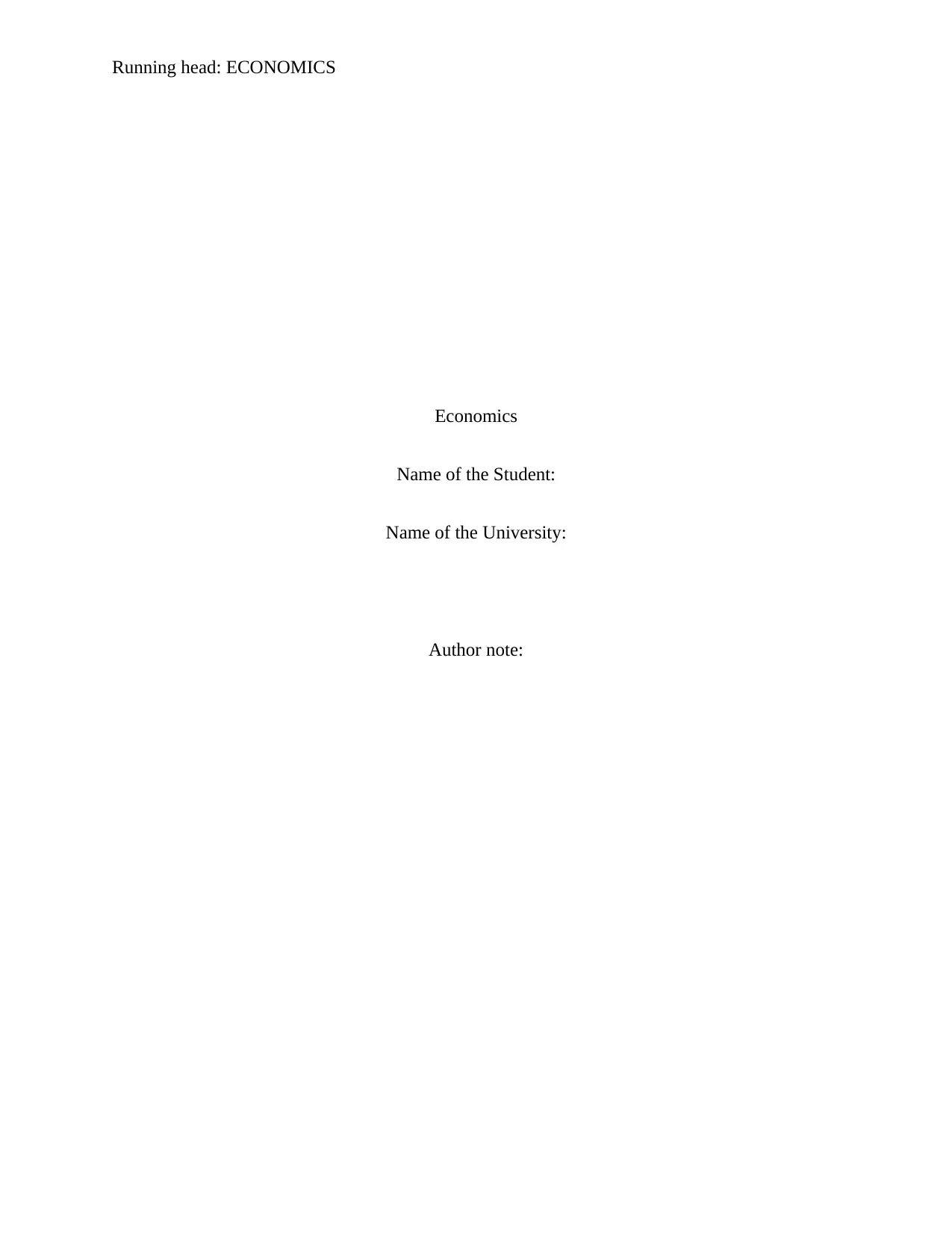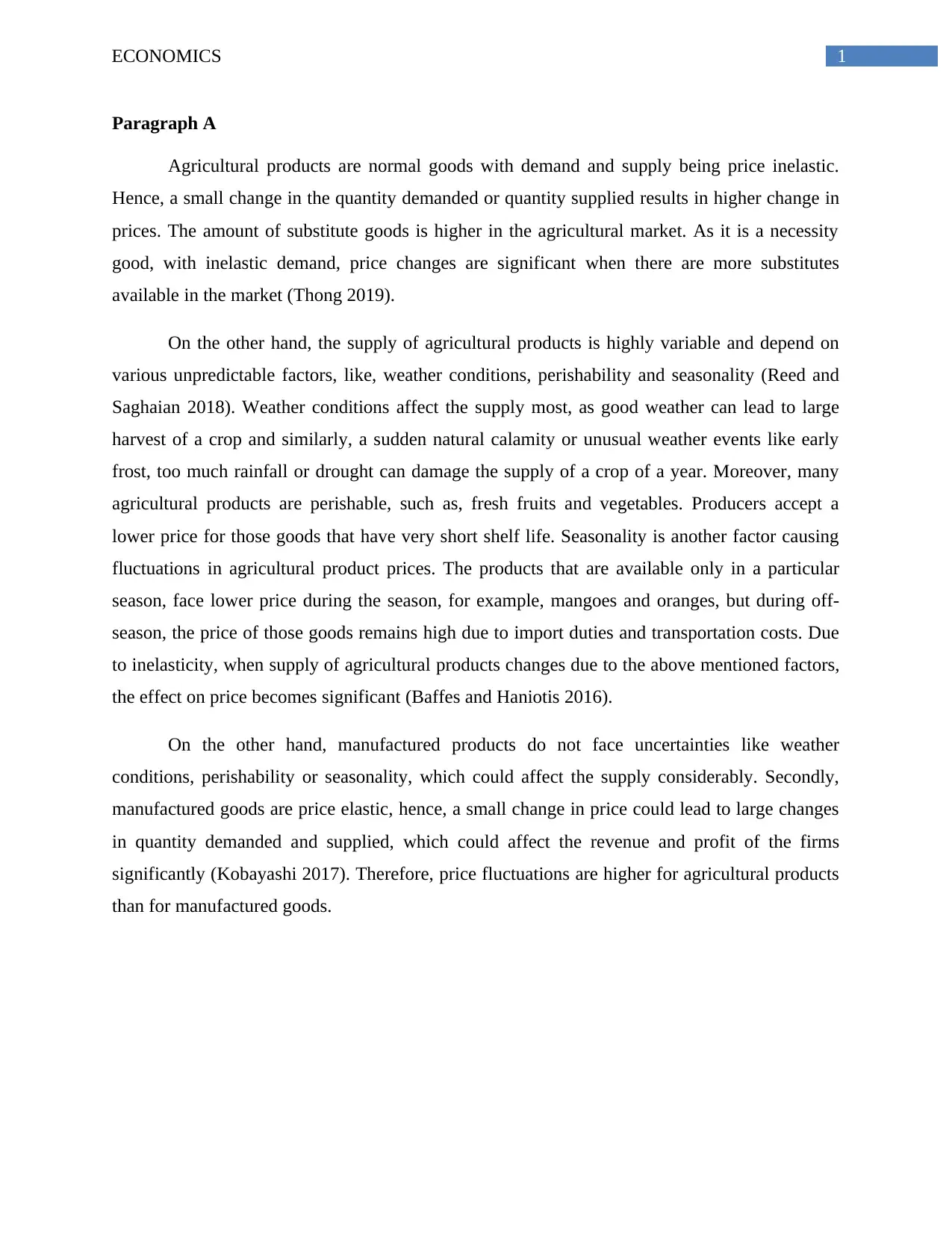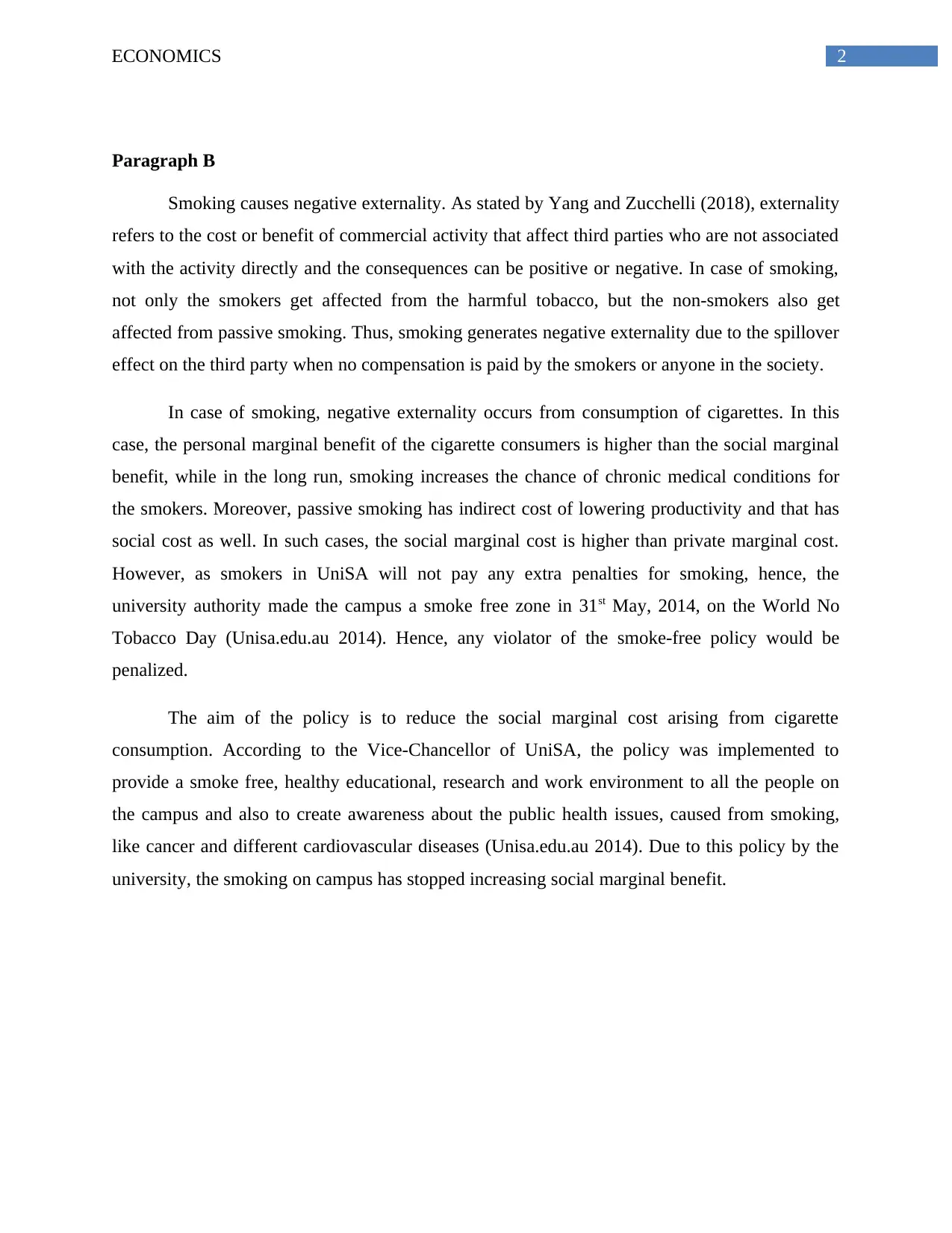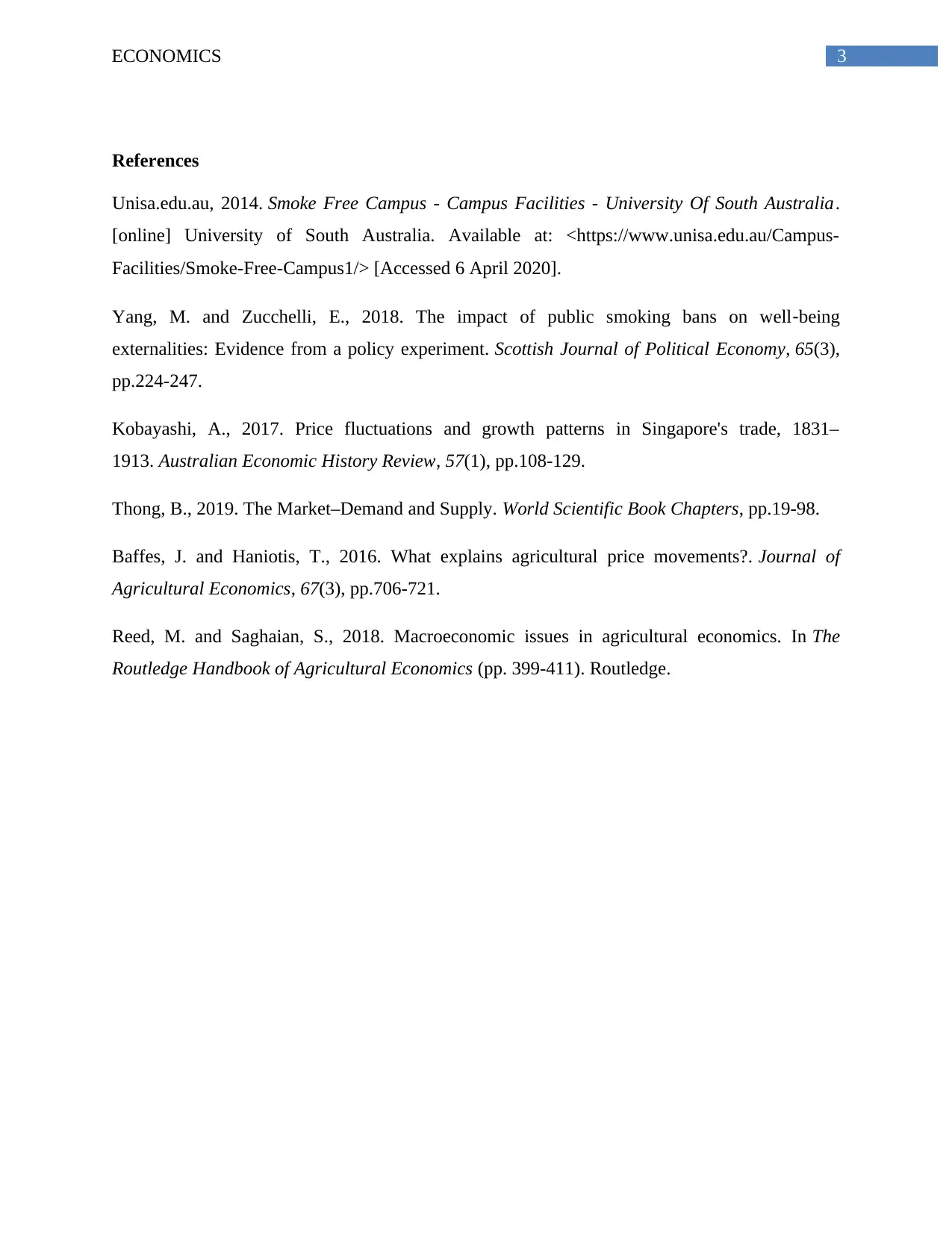ECON 2044 Portfolio Task 2: Agricultural Goods and Smoking Policy
VerifiedAdded on 2022/09/15
|4
|900
|26
Homework Assignment
AI Summary
This economics assignment solution comprises two paragraphs, each approximately 250 words, addressing key economic concepts. Paragraph A utilizes supply and demand analysis to explain the higher price fluctuations in agricultural goods compared to manufactured goods, referencing factors like inelasticity, perishability, seasonality, and variable supply. It highlights how these elements lead to significant price changes. Paragraph B evaluates the effectiveness of the UniSA smoke-free policy in mitigating the negative consumption externality associated with smoking. It explains how the policy aims to reduce social marginal costs and improve public health by creating a smoke-free environment. The solution is well-structured, grammatically correct, and supported by appropriate referencing, demonstrating an understanding of economic principles and their application to real-world scenarios.
1 out of 4











![[object Object]](/_next/static/media/star-bottom.7253800d.svg)